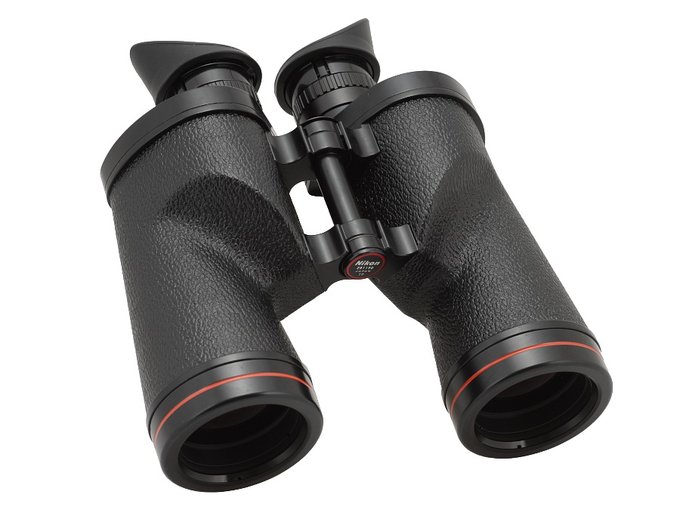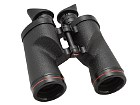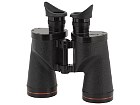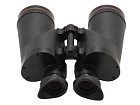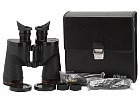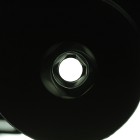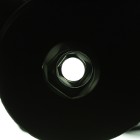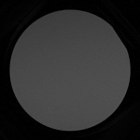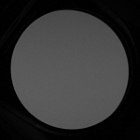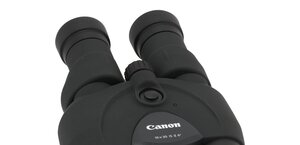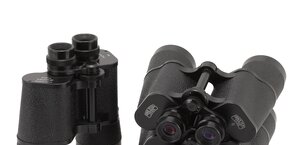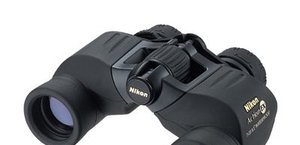Nikon 7x50IF SP WP
There are several 7x50 Porro instruments in the Nikon’s line-up which are dedicated to be used near or on water. The 7x50 IF HP WP Tropical model, tested by us not so long ago, is a very classic example of such devices. The appearance of the Nikon 7x50IF SP WP is very similar to that of the Tropical; the only difference which sticks up at once is a red stripe on objectives of the SW WP. There are more differences in the optical system though, as it was optimized for astronomical observations. As a result such aberrations as coma or astigmatism are supposed to be corrected in a perfect way and the field curvature is to be reduced to minimum.
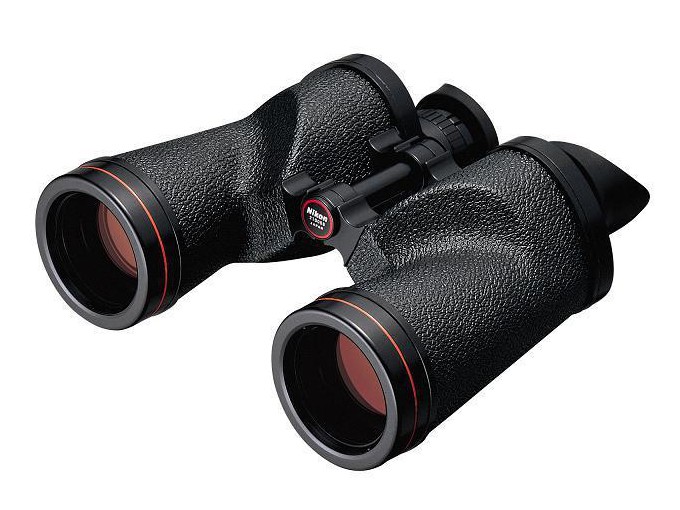 |
The optical system of the Nikon 7x50IF SP WP consists of an achromatic objective (2 elements in one group), Porro prisms behind which there is an element flattening the field and an eyepiece system with 5 elements positioned in 4 groups. Despite a high number of air-to-glass surfaces the set of binoculars is supposed to be characterized by high transmission - undoubtedly a result of employing multi-coatings of the highest quality.
The body of the binoculars has a very classic design; it is made of metal, completely waterproof and submersible up to 5 meters. It is also nitrogen-filled.
Buyers get objective caps, eyepiece caps, two kinds of eyecups (small, rubberized and stiff, profiled), a strap and a hard case in the box. Both the pair of binoculars and all its accessories are made in Japan.
| Magnification | Lens diameter | Angular field of view | Prisms | Eye relief | Weight | Price |
|---|---|---|---|---|---|---|
| 7 | 50 | 128/1000(7.3o) | BaK-4/porro | 16.2 mm | 1485 g | 3799 PLN |
Summary
Pros:
- a classic casing which is solid and waterproof at the same time,
- high transmission,
- very low astigmatism,
- brilliant coma control,
- low distortion,
- lack of problems with chromatic aberration,
- sharp image across the almost whole field of view,
- slight brightness loss on the edge of the field,
- good colour rendering,
- high quality prisms made of BaK-4 glass,
- very good antireflection coatings,
- clean and relatively well-darkened interior of tubes,
- the pair of binoculars and all the accessories included in the box are produced in Japan.
Cons:
- noticeably truncated exit pupils.
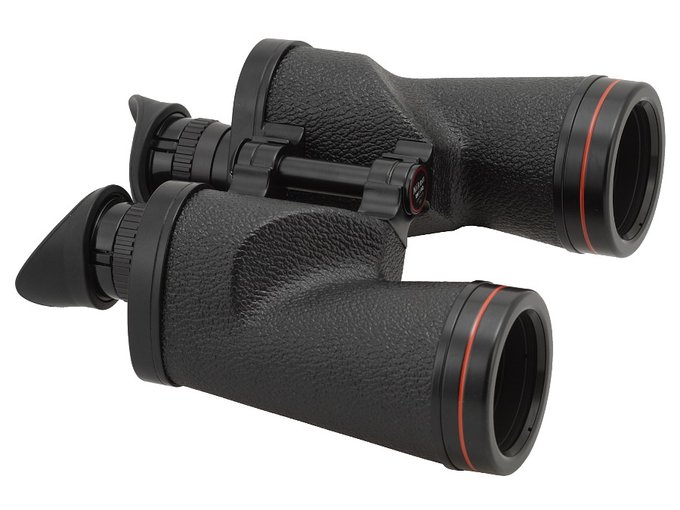 |
Testing a pair of binoculars like the Nikon 7x50IF SP WP is a true pleasure. Not only you deal here with a classic, timeless design which looks great and is of very high build quality but also its optical properties make you want to clap and cheer. There is in fact one slip-up connected with the appearance of exit pupils; apart from that there are simply no reasons to complain.
For a device constructed and dedicated to astronomical observations you get an excellent coma correction, low astigmatism, high transmission, slight chromatic aberration and a flat field of view. When you join these features with a significant surface brightness resulting from the 7x50 parameters you get a perfect tool for astronomical surveying. Take these binoculars, a deckchair, find some really dark sky and you need nothing more to be perfectly happy.
The tested Nikon might have a problem with one rival: the brilliant Fujinon FMT-SX 7x50. It is cheaper, comes with a wider field of view and had a better result in our test. Despite that fact I would recommend the purchase of the Nikon 7x50IF SP WP. Its functional value is nothing to sneeze at but it will be also a great investment and a collector’s item. In 20-30 years’ time, when there are only plastic roof prism instruments available on the market, a solid, timeless pair of binoculars with Porro prisms will sell like hot cakes.
Attention! In this test the transmission value has been measured only for two wavelengths: 532 nm (green) and 657 nm (red) with a margin of error never exceeding 1%. Four measurements have been taken for each optical path and the results have been averaged out.





